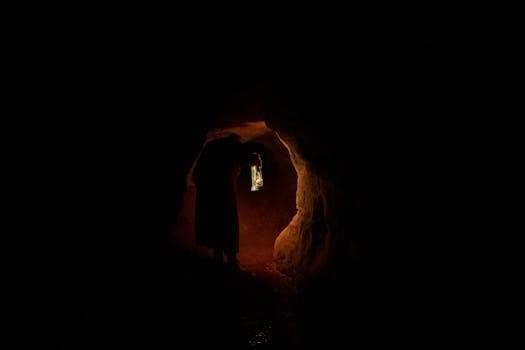Currier & Ives lithographs offer a unique glimpse into 19th-century American life. These hand-colored prints, mass-produced and affordable, depicted popular culture, news events, and everyday scenes. Their value stems from historical significance and artistic merit.
Brief History of Currier & Ives
Nathaniel Currier established his lithography business in 1835, later partnering with James Merritt Ives in 1857. Currier, with a more introspective nature, oversaw production, while Ives handled the financial aspects. The firm, based in New York City, became renowned for its “cheap and popular pictures”. They sold prints ranging from 5 cents to 3 dollars, depending on size, making art accessible to the masses. Currier & Ives’s lithographs covered a wide range of subjects from current events and landscapes to portraits and sporting scenes. The company operated until 1907, leaving an extensive legacy of visual American history, often hand colored, providing a visual chronicle of the nation’s evolution. They produced thousands of prints, becoming a staple in American homes.

Factors Affecting Value
Several factors influence a Currier & Ives lithograph’s worth, including its condition, rarity, subject matter, and size. These elements combine to determine its market price and collectibility.
Print Condition and Preservation
The condition of a Currier & Ives lithograph significantly impacts its value. Factors like foxing, fading, and tears can substantially reduce its worth. Original prints, being quite old, often show signs of wear. Preservation is crucial to maintain a lithograph’s integrity. Proper storage, away from direct sunlight and moisture, is essential. Minor flaws are expected in older prints, but significant damage will lower their value. Professional restoration, when necessary, can help preserve the print, but over-restoration can also negatively affect value, so should be considered carefully. Collectors should seek prints with minimal damage for the best investment.
Rarity and Subject Matter
The rarity of a Currier & Ives print is a key determinant of its value. Some prints, due to limited production or popularity, are much harder to find than others. Subject matter also plays a significant role. Prints depicting scenes of historical importance, such as the Civil War or western expansion, often command higher prices. Popular subjects, such as clipper ships and winter landscapes, are also highly sought after. Conversely, less popular or common themes may not be as valuable. Collectors often focus on specific subjects, impacting the supply and demand, which, in turn, influences the price and overall worth.
Size and Format
The size and format of a Currier & Ives lithograph significantly impact its value. Large folio prints, being more impressive and detailed, generally command higher prices than smaller ones. The format, whether it’s a horizontal landscape or a vertical portrait, can also affect its desirability. Large folio prints, often referred to as “large folios,” were more expensive to produce and are therefore rarer. Small folio prints, while more common, can still be valuable depending on their subject and condition. The overall dimensions and the way the lithograph is presented affect its collectibility and, consequently, its market value.
Key Figures and Artists
Nathaniel Currier and James Merritt Ives were the founders, with Currier overseeing production and Ives handling business. Fanny Palmer and others also contributed significantly to their iconic artwork.
Nathaniel Currier and James Merritt Ives
Nathaniel Currier, born in 1813, was known for his introspective nature and piercing gaze, overseeing the artistic production of the firm. He had a melancholy nature but could also charm. James Merritt Ives, Currier’s brother-in-law, joined as a partner in 1857, primarily handling the financial and business aspects of the company. Together, they formed a powerful partnership, with Currier focusing on the creative side, ensuring quality and artistic merit, while Ives managed the commercial success and distribution of their prints. Their collaboration was crucial to the firm’s long-lasting impact on American culture and visual history, as they were able to create and sell affordable, popular pictures.
Notable Artists⁚ Fanny Palmer and Others
Fanny Palmer was a leading lithographer for Currier & Ives, creating prints that reached a wide audience. Her works often depicted genre scenes and landscapes, and her skill contributed to the firm’s reputation for quality. Other notable artists who contributed to Currier & Ives included George Henry Durrie, known for his New England winter scenes, and Arthur F. Tait, celebrated for his sporting and Western themes. These artists, among others, provided the diverse range of subjects that made Currier & Ives prints so popular, covering everything from everyday life to important events, and each brought a unique style and perspective that broadened the firm’s appeal.

Valuation Resources and Guides
Several resources aid in valuing these prints, including price guides, checklists, and appraisal services. These tools help collectors understand the worth of their Currier & Ives lithographs.
Price Guides and Checklists
Collectors often rely on specialized price guides, such as “Currier’s Price Guide to Currier & Ives Prints,” for estimated values. These guides, often updated, list thousands of original lithographs, providing average retail prices. Checklists, like Frederic A. Conningham’s “Currier & Ives Prints, An Illustrated Check List,” are essential for identifying and cataloging prints. These resources offer a comprehensive overview of known lithographs, helping determine rarity and potential market value. Furthermore, these guides often incorporate information from prominent dealers, ensuring the listed prices reflect current market trends, thus making them invaluable for both buyers and sellers seeking to accurately assess the worth of Currier & Ives lithographs.
Appraisal Services and Dealers
For accurate valuations, seeking professional appraisal services is recommended. Reputable dealers specializing in Currier & Ives prints can provide expert opinions on authenticity and worth. The American Historical Print Collectors Society can be a valuable resource for locating qualified appraisers. These professionals consider various factors, including condition, rarity, and provenance, to determine a fair market value. Dealers often possess extensive knowledge of the market and can offer insights into current trends. Choosing a reputable dealer or appraiser is crucial for making informed decisions when buying, selling, or insuring Currier & Ives lithographs. Their expertise is vital in navigating the complexities of the market.

Identifying Original Lithographs
Distinguishing original Currier & Ives lithographs from reproductions requires careful examination. Factors like paper type, printing technique, and markings, as well as provenance, are crucial in the identification process.
Distinguishing Originals from Reproductions
Differentiating between original Currier & Ives lithographs and later reproductions involves a meticulous process. Originals were created using hand-pulled impressions from lithographic stones, often displaying a unique texture and subtle variations in color. Reproductions, on the other hand, are typically printed using modern methods, resulting in a more uniform and often less vibrant appearance. Examination of the paper is also key; originals utilize specific types of 19th-century paper, while reproductions might use contemporary materials. The presence of specific markings, such as the publisher’s name and address, and the style of lettering can also help distinguish an original from a reproduction. Finally, careful comparison with known authentic examples aids in accurate identification.
Importance of Markings and Provenance
The markings on a Currier & Ives lithograph, including the publisher’s imprint and title, are vital for identification and authentication. These markings can provide clues about the print’s age, series, and even the specific lithographic stone used. However, while markings are essential, they alone do not guarantee originality. Provenance, the history of ownership, also plays a critical role. A print with a well-documented history, tracing its ownership back to the original publication period, is generally more valuable and trustworthy. Conversely, a lack of provenance or inconsistent ownership records can raise concerns about authenticity. Therefore, both markings and provenance are crucial elements in determining the true value of a Currier & Ives print;

Market Trends and Auction Prices
The market for Currier & Ives lithographs has seen fluctuations, with some prints reaching high prices at auction. Demand varies based on subject matter, condition, and rarity.
Recent Auction Results and High-Value Prints
Recent auction results demonstrate the continued interest in Currier & Ives lithographs, with certain pieces achieving remarkable prices. For example, “Across the Continent,” a stunning depiction of the American West, sold for a record $62,500 in 2018, highlighting the significant value attached to some of their works. Large folio prints are often the most sought-after, with many popular examples fetching between $10,000 and $35,000. These high-value prints are typically well-preserved, rare, and depict iconic scenes. Provenance also plays a significant role in determining auction prices. These trends indicate a strong market for collectors seeking exceptional examples of Currier & Ives lithographs, reflecting their enduring appeal and historical importance.
Current Market Demand and Investment Potential
The current market demand for Currier & Ives lithographs remains robust, fueled by collectors and enthusiasts alike. The prints’ historical significance, artistic charm, and tangible connection to 19th-century America contribute to their enduring popularity. While the market can fluctuate, well-preserved original lithographs, especially those with desirable subjects and rarity, continue to hold strong investment potential. The increase in prices over the past few years suggests a positive trend for collectors. However, it’s essential to approach purchasing with knowledge and due diligence, considering factors like condition, provenance, and market trends. Investing in Currier & Ives lithographs can be both a passion and a potentially rewarding venture.


